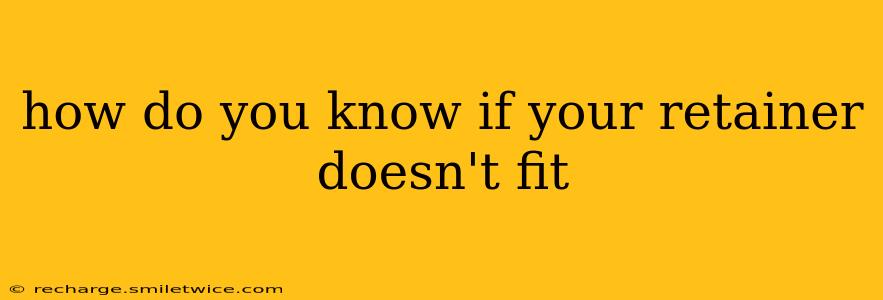How Do You Know If Your Retainer Doesn't Fit?
A properly fitting retainer is crucial for maintaining the results of your orthodontic treatment. An ill-fitting retainer can lead to discomfort, shifting teeth, and ultimately, the need for further orthodontic work. Knowing the signs of a poorly fitting retainer is vital for maintaining a healthy and beautiful smile.
1. Pain and Discomfort:
This is often the first and most obvious sign. While you might experience mild discomfort for the first few days after getting a new retainer, persistent, sharp pain, or pressure points that don't subside are significant warning signs. The retainer shouldn't cause intense or ongoing pain. If it does, it's likely not sitting correctly.
2. Difficulty Placing or Removing the Retainer:
If you're struggling to put in or take out your retainer, it could be a sign of a poor fit. It should slide in and out relatively easily. Excessive force is a red flag. Forcing it can damage the retainer or your teeth.
3. Irritation or Sores:
Persistent irritation, sores, or cuts on your gums, cheeks, or tongue are clear indicators that your retainer is rubbing against your soft tissues. This usually means it's not conforming to the shape of your mouth correctly.
4. Teeth Feeling Loose or Shifting:
This is a serious sign. If you notice your teeth feeling loose or shifting, it suggests your retainer isn't providing adequate support and your teeth are beginning to revert to their previous positions. This necessitates immediate attention from your orthodontist.
5. The Retainer Feels Loose or Wobbly:
A retainer that feels loose or wobbly in your mouth is not providing proper support. It may not be contacting all your teeth correctly, which can lead to teeth shifting.
6. Changes in Bite:
A noticeable change in your bite, such as a difficulty biting down evenly or experiencing a clicking sound when you close your jaw, could indicate that your retainer is not fitting properly and is affecting your jaw alignment.
7. Food Getting Trapped Under the Retainer:
Excessive food trapping can be an indication of an improperly fitting retainer. While some food particles might occasionally get trapped, an excessive amount suggests there are gaps between the retainer and your teeth.
What to Do If Your Retainer Doesn't Fit:
If you experience any of these symptoms, contact your orthodontist immediately. Don't attempt to adjust the retainer yourself, as this could further damage it or your teeth. Your orthodontist will examine your retainer and assess the fit. They may be able to adjust it, or they may need to make a new one.
Remember, regular checkups with your orthodontist are essential to ensure your retainer is functioning correctly and maintaining your beautiful, straight smile. Ignoring a poorly fitting retainer can have long-term consequences for your oral health.
